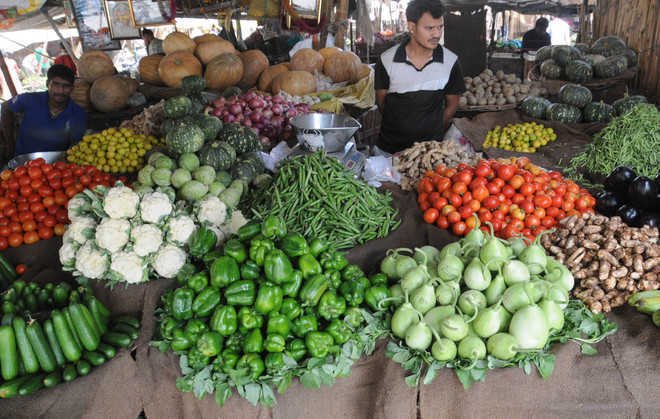During the announcement of the monetary policy decisions on February 8, RBI Governor and MPC Chair Shaktikanta Das emphasized that food price inflation has continued to cause significant volatility in the inflation trajectory. The Monetary Policy Committee (MPC) has maintained the inflation forecast at 5.4 percent for the current fiscal year and 4.5 percent for FY25.
The latest CPI inflation data for January reaffirms the concerns expressed by the RBI. The persistent increase in prices of spices, vegetables, and pulses, particularly in rural areas, has created a worrisome situation for the government, especially in an election year.

The Consumer Price Index (CPI) for January remained consistent with market expectations, standing at 5.1 percent. In December, it was recorded at 5.69 percent. Notably, the high prices of food, specifically vegetables and pulses, were significant contributors to inflation. Inflation rates for vegetables were at 27.03 percent, pulses at 19.54 percent, and spices at 16.36 percent. Interestingly, the prices of edible oil experienced a decline, falling by 14.96 percent. Inflation for meat and fish was at 1.19 percent, fuel at 0.60 percent, and cereal and related products at 7.83 percent.
In rural areas, inflation rates for certain categories remained higher compared to urban areas. In spices, rural areas experienced an inflation rate of 16.86 percent, while urban areas had a rate of 15.27 percent. For transport and communication, the inflation rate in rural areas was 2.26 percent, whereas in urban areas it was 1.63 percent. In terms of sugar and confectionary, rural areas had an inflation rate of 7.81 percent, while urban areas had a rate of 6.85 percent. Lastly, for eggs, the inflation rate in rural areas was 6.22 percent, whereas in urban areas it was 4.62 percent.
Despite the government’s extension of the free import policy for tur and urad dal until March 2025, the prices of cereals have significantly decreased since September 2022. However, the prices of vegetables, pulses, and spices remain unstable and persistently high. Inflation for pulses has remained stubbornly high, reaching double digits for several months.
Why is high rural inflation a concern?
In his MPC statement, Governor Das emphasized that the inflation trajectory going forward would be influenced by the evolving food inflation outlook. He noted that Rabi sowing has exceeded last year’s level and that the usual seasonal correction in vegetable prices is ongoing, albeit unevenly. However, there remains significant uncertainty regarding the food price outlook due to the possibility of adverse weather events.
The RBI’s November bulletin highlighted that rural demand continues to lag behind urban demand. Despite the dismissal of the K-shaped recovery theory by some, the bulletin stated that rural consumers are becoming increasingly price-sensitive and opting for more affordable alternatives. According to the bulletin, overall volume growth in rural areas was 6.4 percent, compared to 10.25 percent in urban areas. The uncertainty surrounding the food price outlook further exacerbates concerns about high rural inflation. In terms of vegetable prices, inflation in rural areas stands at 25.82 percent, while in urban areas, it is slightly lower at 28.92 percent.

The rise in rural inflation will directly impact the incomes and demand of rural areas, leading to a ripple effect on various industries, ranging from FMCG to auto to housing. Additionally, it will also affect economic activities and the creation of job opportunities.
During an election year, the notion of ‘All is well’ can only be effective if the cost of a basic Indian thaali decreases. According to Crisil’s analysis, the price of a vegetarian thaali was Rs 28 in January, compared to Rs 29.7 in December and Rs 26.6 in January 2023. This increase in price is primarily attributed to a 35 percent rise in onion prices year-on-year (YoY) and a 20 percent increase in tomato prices.
In response, the government has implemented proactive measures to combat inflation in pulses over the past few months. These measures include regulating the export and import of pulses, releasing significant stocks of cereals, and imposing restrictions on the export of rice and sugar. Furthermore, the government has introduced a range of Bharat brands in various categories such as atta, rice, dal, and more.
